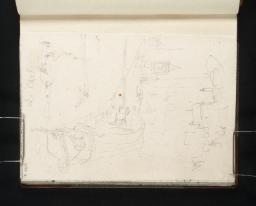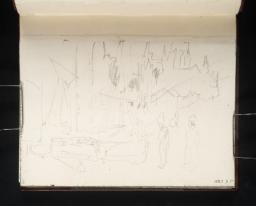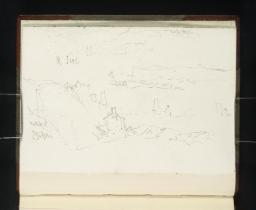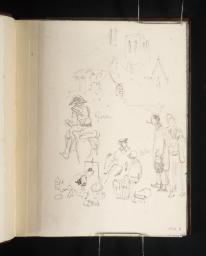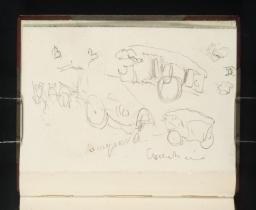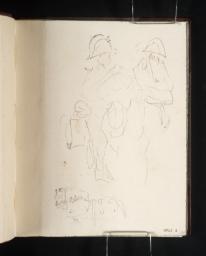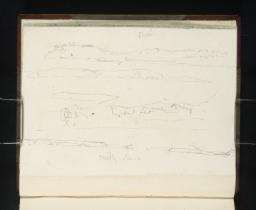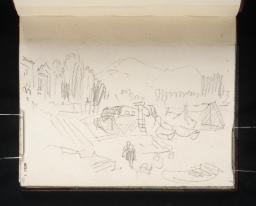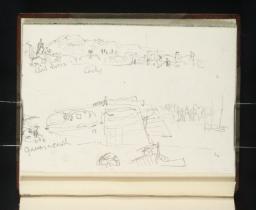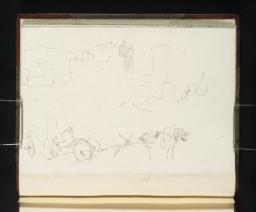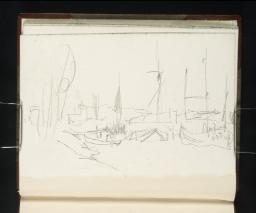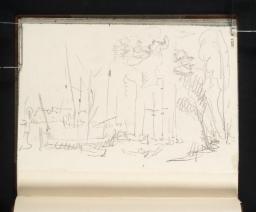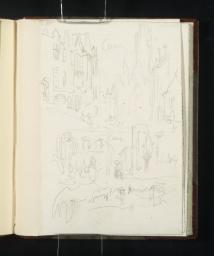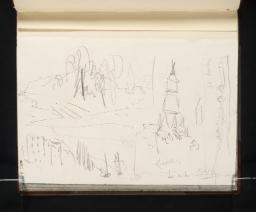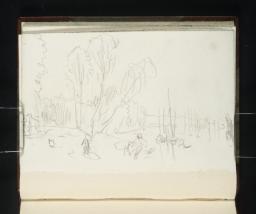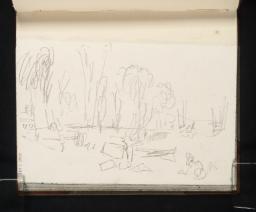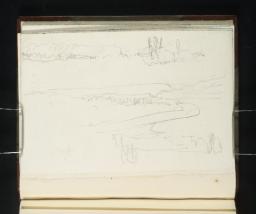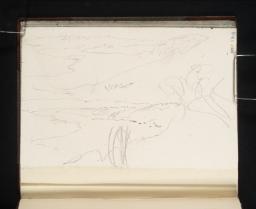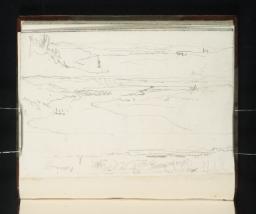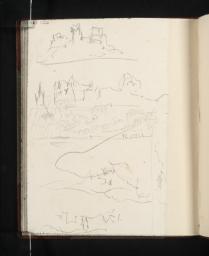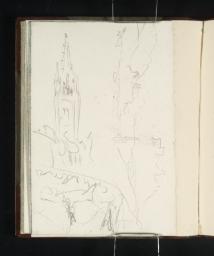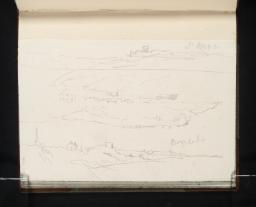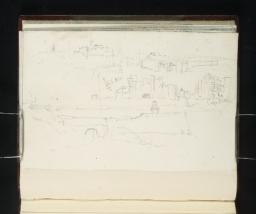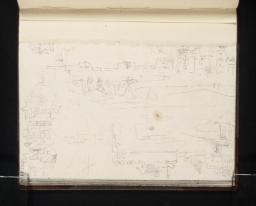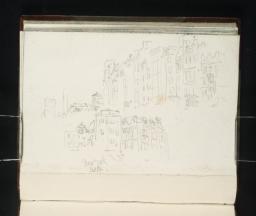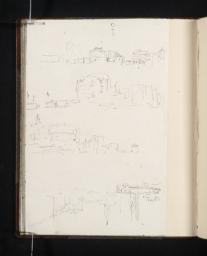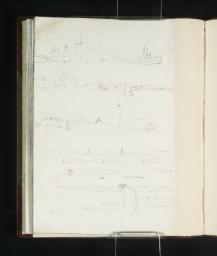Turner Bequest CCLI
Sketchbook rebound in brown cardboard with leather corners and spine
34 leaves of white wove paper with mottled blue edges
Approximate page size 122 x 83 mm
34 leaves of white wove paper with mottled blue edges
Approximate page size 122 x 83 mm
Accepted by the nation as part of the Turner Bequest 1856
Exhibition history
References
This pocket sketchbook contains pencil drawings of the coastal scenery, gothic architecture and picturesque settlements of Upper Normandy. The particular tour on which Turner made use of this sketchbook has yet to be fully ascertained. In 1987, Turner specialist Andrew Wilton listed it alongside the Coutances and Mont St Michel (CCL), Rouen (CCLV) and Guernsey (CCLII) sketchbooks as part of material gathered on an 1829 visit to Northern France and the Channel Islands.1 However the present catalogue follows the 1826 dating proposed by Tate curator Ian Warrell in 1997 which links the sketchbook to the early stages of an autumn tour that carried the artist through Normandy, down the Loire Valley and back to the English Channel via Paris.2 The popularity of picturesque and antiquarian French subjects amongst British audiences around this time probably provided an important impetus for these material-gathering journeys through the medieval towns to the north of the country. It has been observed, for example, that Turner’s younger contemporary David Roberts had exhibited an oil painting (unlocated) of Rouen Cathedral at the Royal Academy exhibition in the spring of 1826.3
Formerly known simply as the Caen and Isigny sketchbook, the volume was given its current title in response Warrell’s identification of several key locations recorded in the volume, notably Rouen, Le Havre and Bayeux.4 The order in which Turner studied these sites is difficult to ascertain. The variety of draftsmanship in the sketchbook, ranging from fairly detailed studies to loose drawings apparently made in transit, confounds any obvious logical order as does the sequence by which the towns of Normandy make their appearance within the foliation. In fact, Turner appears often to have made his notations wherever the volume happened to open. Thus folio 33 recto (D23521; Turner Bequest CCLI 33) records sites as geographically distant as Le Havre, Isigny-sur-Mer, and Bayeux. Nonetheless Warrell has tentatively suggested a possible itinerary that would encompass these different stops on the journey.5 Having approached Rouen from the Channel port of Dieppe, in this version of events Turner then headed back to the coast where the Seine debouches into the sea at Le Havre and Honfleur, before journeying progressively west to Caen, Luc-sur-Mer, Saint-Aubin-sur-Mer, Bayeux and Isigny-sur-Mer.
Below are provided lists of the pages on which these major sites are recorded in the order of Warrell’s proposed itinerary:
Rouen: Folios 5 Recto to 6 Recto (D23465–D23467; Turner Bequest CCLI 5–6).
Le Havre: Folios 4 Verso (D23464; Turner Bequest CCLI 4a), 13 Verso to 15 Verso (D23482–D23486; Turner Bequest CCLI 13a–15a).
Caen: Folios 8 Verso (D23472; Turner Bequest CCLI 8a), 17 Verso to 23 Verso (D23490–D23502; Turner Bequest CCLI 17a–23a).
Saint-Aubin-sur-Mer: Folios 9 Recto (D23473; Turner Bequest CCLI 9) 13 Recto (D23481; Turner Bequest CCLI 13), 26 Recto to 27 Recto (D23507–D23509; Turner Bequest CCLI 26–Turner Bequest CCLI 27).
Bayeux: Folios 28 Verso to 30 Recto (D23512–D23515; Turner Bequest CCLI 28a–30), 32 Verso to 34 Recto (D23520–D23523; CCLI 32a–34).
Isigny-sur-Mer: Folio 33 Recto (D23521; Turner Bequest CCLI 33).
Technical Notes
How to cite
John Chu, ‘Rouen, Le Havre, Caen, Bayeux and Isigny Sketchbook 1826’, sketchbook, July 2015, in David Blayney Brown (ed.), J.M.W. Turner: Sketchbooks, Drawings and Watercolours, Tate Research Publication, March 2017, https://www

